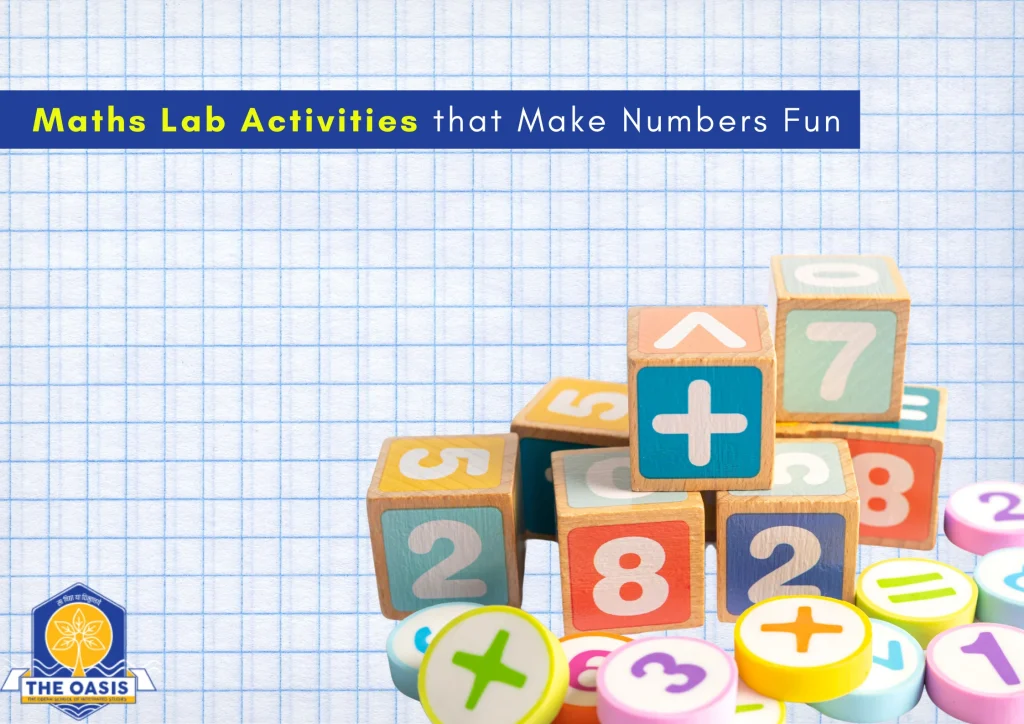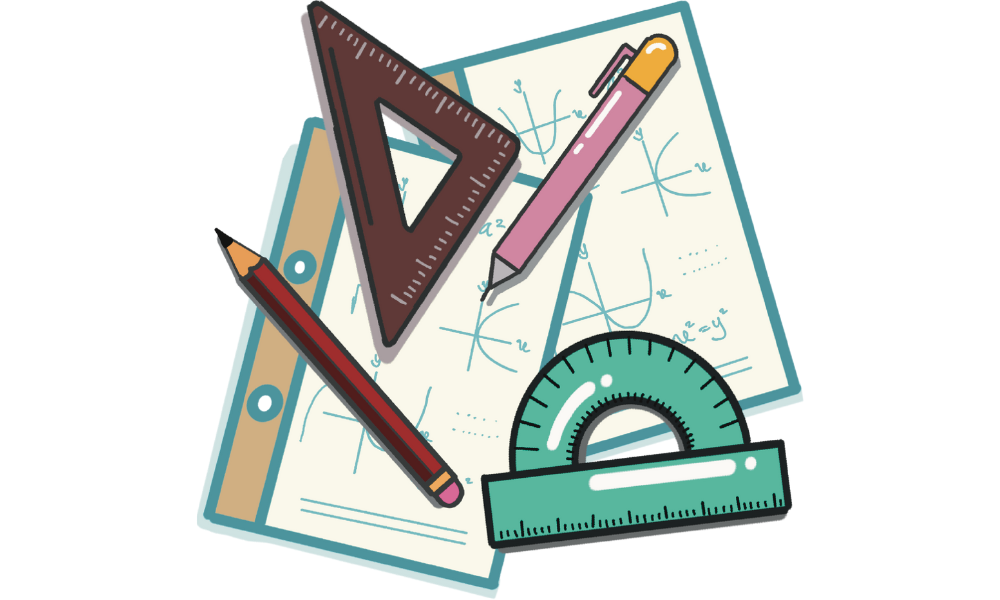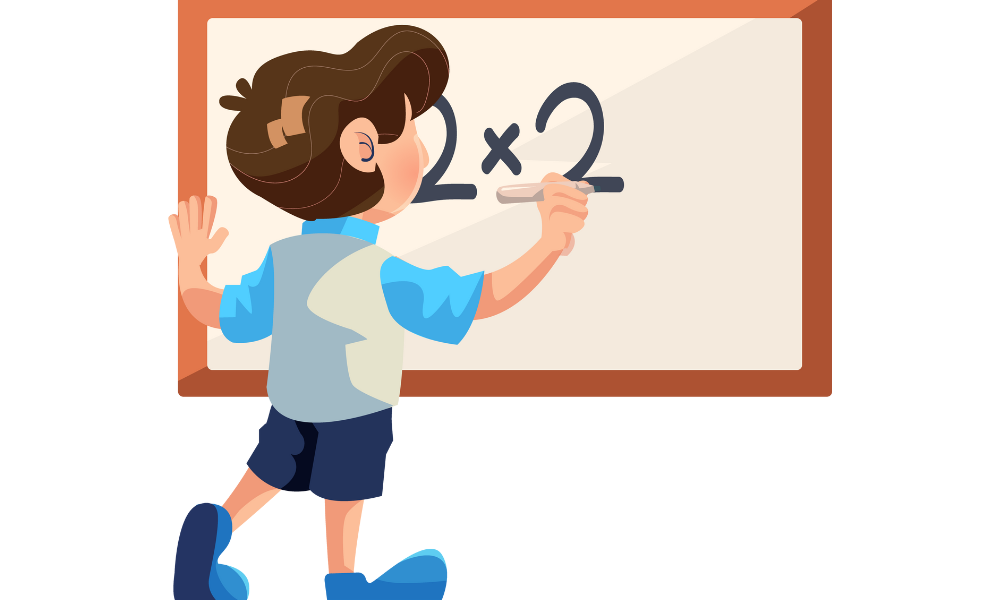 Mathematics is often seen as a challenging subject among students, but it doesn’t have to be that way. With the help of innovative tools and experiential learning, maths can be transformed into an exciting subject full of discovery and understanding.
One of the best ways to make maths enjoyable is through Maths Lab Activities. These hands-on experiences allow children to engage with mathematical concepts in a creative and practical manner.
In Boys Boarding Schools in India, where residential education allows for a structured and immersive learning environment, Maths Lab Activities serve as an excellent supplement to the traditional curriculum.
Students get the opportunity to visualize and interact with numbers, shapes, and patterns, turning abstract theories into tangible realities.
Mathematics is often seen as a challenging subject among students, but it doesn’t have to be that way. With the help of innovative tools and experiential learning, maths can be transformed into an exciting subject full of discovery and understanding.
One of the best ways to make maths enjoyable is through Maths Lab Activities. These hands-on experiences allow children to engage with mathematical concepts in a creative and practical manner.
In Boys Boarding Schools in India, where residential education allows for a structured and immersive learning environment, Maths Lab Activities serve as an excellent supplement to the traditional curriculum.
Students get the opportunity to visualize and interact with numbers, shapes, and patterns, turning abstract theories into tangible realities.
Why Maths Lab Activities Are Important:
 Maths lab activities bridge the gap between theoretical knowledge and practical application. They help develop critical thinking, problem-solving abilities, and analytical skills. Instead of memorizing formulas and procedures, students learn by doing.
Some key benefits include:
Maths lab activities bridge the gap between theoretical knowledge and practical application. They help develop critical thinking, problem-solving abilities, and analytical skills. Instead of memorizing formulas and procedures, students learn by doing.
Some key benefits include:
- Enhancing conceptual clarity through physical models and manipulatives.
- Making learning more student-centered and interactive.
- Catering to different learning styles, especially kinesthetic learners.
- Encouraging collaboration and communication among students.
- Promoting a love for mathematics from an early stage.
Popular Maths Lab Activities:
 Here are some popular Maths Lab Activities that have proven to be both engaging and educational for students across grades:
1 . Geometric Shape Construction
Using paper folding, matchsticks, clay, or straws, students can construct 2D and 3D geometric shapes. This helps them understand concepts of perimeter, area, volume, and properties of shapes.
2. Number Line Jumps
With the help of floor number lines or printed charts, students jump to represent operations like addition, subtraction, and even multiplication. This kinesthetic activity helps reinforce basic arithmetic.
3. Fraction Kits
By using colored paper or cardboard, students can create their own fraction kits. They can compare, add, or subtract fractions visually, enhancing their understanding of part-whole relationships.
4. Math Puzzles and Games
Puzzles like Sudoku, magic squares, and tangrams are fantastic for logical reasoning. Board games involving numbers or strategy also provide strong mathematical engagement.
5. Algebra Tiles
These are manipulatives used to teach algebraic expressions and equations. Students physically move tiles to simplify or solve equations, making abstract algebra easier to grasp.
6. Measurement Activities
Using rulers, measuring tapes, and balances, students engage in real-world measurement activities. Estimating and calculating length, weight, and volume becomes fun and relatable.
7. Vedic Maths Techniques
Incorporating Vedic Maths tricks as activities not only increases speed and accuracy but also instills curiosity about ancient Indian mathematical wisdom.
8. Probability with Dice and Coins
Simple experiments using dice, playing cards, and coins help children understand probability and chance in a playful way.
9. Graphing Activities
Students collect real-life data like classroom preferences or weather data and plot it using bar graphs, pie charts, or line graphs. This builds data literacy and interpretation skills.
10. Budget Planning Exercise
Assigning students an imaginary budget for planning a trip or monthly household expenditure gives them real-life applications of addition, subtraction, percentages, and estimation.
Here are some popular Maths Lab Activities that have proven to be both engaging and educational for students across grades:
1 . Geometric Shape Construction
Using paper folding, matchsticks, clay, or straws, students can construct 2D and 3D geometric shapes. This helps them understand concepts of perimeter, area, volume, and properties of shapes.
2. Number Line Jumps
With the help of floor number lines or printed charts, students jump to represent operations like addition, subtraction, and even multiplication. This kinesthetic activity helps reinforce basic arithmetic.
3. Fraction Kits
By using colored paper or cardboard, students can create their own fraction kits. They can compare, add, or subtract fractions visually, enhancing their understanding of part-whole relationships.
4. Math Puzzles and Games
Puzzles like Sudoku, magic squares, and tangrams are fantastic for logical reasoning. Board games involving numbers or strategy also provide strong mathematical engagement.
5. Algebra Tiles
These are manipulatives used to teach algebraic expressions and equations. Students physically move tiles to simplify or solve equations, making abstract algebra easier to grasp.
6. Measurement Activities
Using rulers, measuring tapes, and balances, students engage in real-world measurement activities. Estimating and calculating length, weight, and volume becomes fun and relatable.
7. Vedic Maths Techniques
Incorporating Vedic Maths tricks as activities not only increases speed and accuracy but also instills curiosity about ancient Indian mathematical wisdom.
8. Probability with Dice and Coins
Simple experiments using dice, playing cards, and coins help children understand probability and chance in a playful way.
9. Graphing Activities
Students collect real-life data like classroom preferences or weather data and plot it using bar graphs, pie charts, or line graphs. This builds data literacy and interpretation skills.
10. Budget Planning Exercise
Assigning students an imaginary budget for planning a trip or monthly household expenditure gives them real-life applications of addition, subtraction, percentages, and estimation.
Incorporating Technology into Maths Lab Activities
 Maths lab activities can be significantly enhanced with the integration of technology.
Tools such as smart boards, educational apps, virtual manipulatives, and interactive games help create a dynamic and immersive learning environment.
Software like GeoGebra enables students to visualize complex concepts in geometry and algebra with precision.
Maths lab activities can be significantly enhanced with the integration of technology.
Tools such as smart boards, educational apps, virtual manipulatives, and interactive games help create a dynamic and immersive learning environment.
Software like GeoGebra enables students to visualize complex concepts in geometry and algebra with precision.
How to Design Effective Maths Lab Activities:
 Designing engaging maths lab activities requires careful planning:
Designing engaging maths lab activities requires careful planning:
- Align the activity with learning objectives and curriculum.
- Ensure materials are easily accessible and safe.
- Use real-world contexts to increase relevance.
- Encourage students to reflect and discuss their learning.
- Incorporate assessment tools to measure understanding.
Maths Lab in Primary vs. Secondary Grades
The nature of maths lab activities can vary based on the age group:
- In primary classes, focus is on basic operations, pattern recognition, and hands-on counting exercises.
- For middle and secondary grades, activities can delve deeper into algebra, geometry, and data analysis, using more sophisticated tools and abstract reasoning.
Role of Teachers in Facilitating Maths Lab Activities
 Teachers act as facilitators rather than traditional instructors during maths lab sessions.
Their role includes:
Teachers act as facilitators rather than traditional instructors during maths lab sessions.
Their role includes:
- Guiding students through tasks without directly providing answers.
- Encouraging exploration and multiple solution paths.
- Observing student behavior and identifying areas of difficulty.
- Providing timely feedback and support.
Frequently Asked Questions (FAQs)
Ques 1. Why are maths lab activities important?
Ans. They make math fun, interactive, and help students apply theoretical concepts in real-world situations.
Ques 2. Who can participate in math lab activities?
Ans. Students of all classes, especially primary to high school levels, can participate based on curriculum guidelines.
Ques 3. How do math labs help weak students?
Ans. They allow slow learners to grasp abstract concepts visually and practically, enhancing understanding.
Ques 4. How frequently are math lab sessions conducted?
Ans. This varies by school, but generally once a week or twice a month, depending on the academic plan.
Ques 5. How frequently are math lab sessions conducted?
Ans. This varies by school, but generally once a week or twice a month, depending on the academic plan.
 Mathematics is often seen as a challenging subject among students, but it doesn’t have to be that way. With the help of innovative tools and experiential learning, maths can be transformed into an exciting subject full of discovery and understanding.
One of the best ways to make maths enjoyable is through Maths Lab Activities. These hands-on experiences allow children to engage with mathematical concepts in a creative and practical manner.
In Boys Boarding Schools in India, where residential education allows for a structured and immersive learning environment, Maths Lab Activities serve as an excellent supplement to the traditional curriculum.
Students get the opportunity to visualize and interact with numbers, shapes, and patterns, turning abstract theories into tangible realities.
Mathematics is often seen as a challenging subject among students, but it doesn’t have to be that way. With the help of innovative tools and experiential learning, maths can be transformed into an exciting subject full of discovery and understanding.
One of the best ways to make maths enjoyable is through Maths Lab Activities. These hands-on experiences allow children to engage with mathematical concepts in a creative and practical manner.
In Boys Boarding Schools in India, where residential education allows for a structured and immersive learning environment, Maths Lab Activities serve as an excellent supplement to the traditional curriculum.
Students get the opportunity to visualize and interact with numbers, shapes, and patterns, turning abstract theories into tangible realities.
 Maths lab activities bridge the gap between theoretical knowledge and practical application. They help develop critical thinking, problem-solving abilities, and analytical skills. Instead of memorizing formulas and procedures, students learn by doing.
Some key benefits include:
Maths lab activities bridge the gap between theoretical knowledge and practical application. They help develop critical thinking, problem-solving abilities, and analytical skills. Instead of memorizing formulas and procedures, students learn by doing.
Some key benefits include:
 Here are some popular Maths Lab Activities that have proven to be both engaging and educational for students across grades:
1 . Geometric Shape Construction
Using paper folding, matchsticks, clay, or straws, students can construct 2D and 3D geometric shapes. This helps them understand concepts of perimeter, area, volume, and properties of shapes.
2. Number Line Jumps
With the help of floor number lines or printed charts, students jump to represent operations like addition, subtraction, and even multiplication. This kinesthetic activity helps reinforce basic arithmetic.
3. Fraction Kits
By using colored paper or cardboard, students can create their own fraction kits. They can compare, add, or subtract fractions visually, enhancing their understanding of part-whole relationships.
4. Math Puzzles and Games
Puzzles like Sudoku, magic squares, and tangrams are fantastic for logical reasoning. Board games involving numbers or strategy also provide strong mathematical engagement.
5. Algebra Tiles
These are manipulatives used to teach algebraic expressions and equations. Students physically move tiles to simplify or solve equations, making abstract algebra easier to grasp.
6. Measurement Activities
Using rulers, measuring tapes, and balances, students engage in real-world measurement activities. Estimating and calculating length, weight, and volume becomes fun and relatable.
7. Vedic Maths Techniques
Incorporating Vedic Maths tricks as activities not only increases speed and accuracy but also instills curiosity about ancient Indian mathematical wisdom.
8. Probability with Dice and Coins
Simple experiments using dice, playing cards, and coins help children understand probability and chance in a playful way.
9. Graphing Activities
Students collect real-life data like classroom preferences or weather data and plot it using bar graphs, pie charts, or line graphs. This builds data literacy and interpretation skills.
10. Budget Planning Exercise
Assigning students an imaginary budget for planning a trip or monthly household expenditure gives them real-life applications of addition, subtraction, percentages, and estimation.
Here are some popular Maths Lab Activities that have proven to be both engaging and educational for students across grades:
1 . Geometric Shape Construction
Using paper folding, matchsticks, clay, or straws, students can construct 2D and 3D geometric shapes. This helps them understand concepts of perimeter, area, volume, and properties of shapes.
2. Number Line Jumps
With the help of floor number lines or printed charts, students jump to represent operations like addition, subtraction, and even multiplication. This kinesthetic activity helps reinforce basic arithmetic.
3. Fraction Kits
By using colored paper or cardboard, students can create their own fraction kits. They can compare, add, or subtract fractions visually, enhancing their understanding of part-whole relationships.
4. Math Puzzles and Games
Puzzles like Sudoku, magic squares, and tangrams are fantastic for logical reasoning. Board games involving numbers or strategy also provide strong mathematical engagement.
5. Algebra Tiles
These are manipulatives used to teach algebraic expressions and equations. Students physically move tiles to simplify or solve equations, making abstract algebra easier to grasp.
6. Measurement Activities
Using rulers, measuring tapes, and balances, students engage in real-world measurement activities. Estimating and calculating length, weight, and volume becomes fun and relatable.
7. Vedic Maths Techniques
Incorporating Vedic Maths tricks as activities not only increases speed and accuracy but also instills curiosity about ancient Indian mathematical wisdom.
8. Probability with Dice and Coins
Simple experiments using dice, playing cards, and coins help children understand probability and chance in a playful way.
9. Graphing Activities
Students collect real-life data like classroom preferences or weather data and plot it using bar graphs, pie charts, or line graphs. This builds data literacy and interpretation skills.
10. Budget Planning Exercise
Assigning students an imaginary budget for planning a trip or monthly household expenditure gives them real-life applications of addition, subtraction, percentages, and estimation.
 Maths lab activities can be significantly enhanced with the integration of technology.
Tools such as smart boards, educational apps, virtual manipulatives, and interactive games help create a dynamic and immersive learning environment.
Software like GeoGebra enables students to visualize complex concepts in geometry and algebra with precision.
Maths lab activities can be significantly enhanced with the integration of technology.
Tools such as smart boards, educational apps, virtual manipulatives, and interactive games help create a dynamic and immersive learning environment.
Software like GeoGebra enables students to visualize complex concepts in geometry and algebra with precision.
 Designing engaging maths lab activities requires careful planning:
Designing engaging maths lab activities requires careful planning:
 Teachers act as facilitators rather than traditional instructors during maths lab sessions.
Their role includes:
Teachers act as facilitators rather than traditional instructors during maths lab sessions.
Their role includes:



